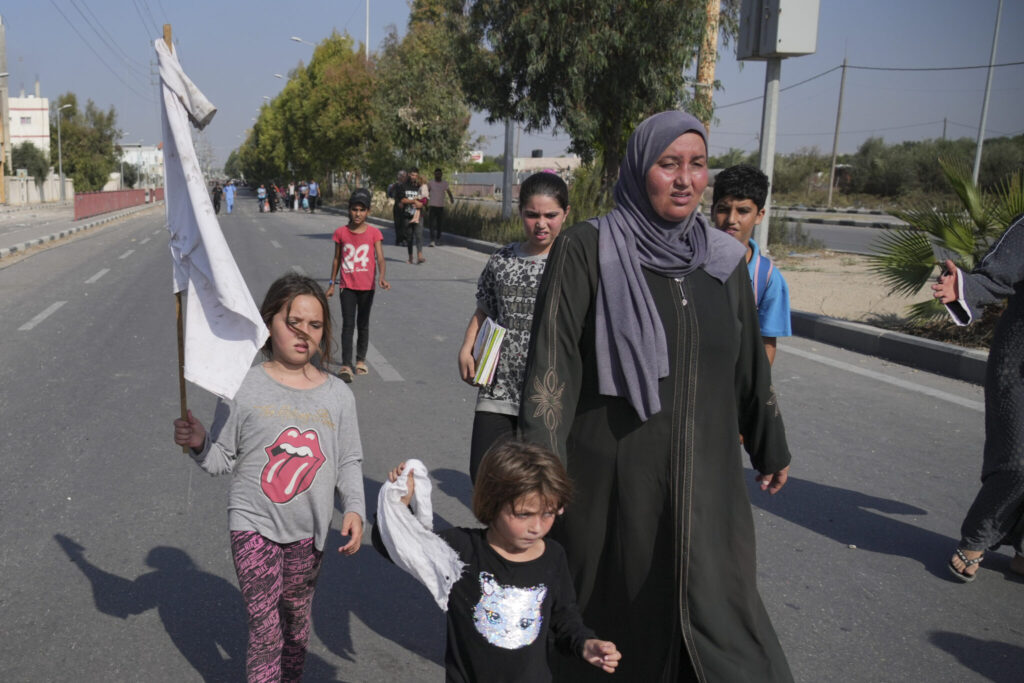What was once Gaza’s busiest thoroughfare has become a terrifying escape route for Palestinian civilians fleeing combat on foot or on donkey carts. On their way south, those running for their lives said they raised their hands and waved white flags to move past Israeli tanks along the four-lane highway.
Quick Read
- Gaza’s Highway of Flight: The main road out of northern Gaza, Salah al-Din, turned into an escape route amid conflict.
- Civilian Exodus: Palestinians, with white flags, flee combat areas, with some reporting Israeli forces firing upon them.
- Casualties Reported: Escaping civilians witness bodies along the escape path.
- Minimal Possessions: Displaced persons carry minimal belongings; some just the clothes they wear.
- Israeli Encirclement: Israeli forces have surrounded Gaza City, cutting Gaza in half, and are pushing Palestinians southward.
- Israel’s Civilian Warnings: Israel has announced safe passage periods for civilians to move south, which have been met with skepticism.
- Staying Behind in North Gaza: Despite Israeli warnings, many remain due to fear, lack of resources in the south, or reports of danger along the way.
- Contested Safe Passage: Health Ministry in Gaza criticizes Israeli evacuation corridors as dangerous; Israel argues they’re trying to protect civilians from Hamas’ use of human shields.
- Evacuation Numbers: U.N. monitors report thousands have utilized evacuation windows, but many more remain.
- Accounts of Danger: Those who’ve traveled south describe threatening encounters, including gunfire meant to intimidate.
- Southern Hospitality: Locals from Bureij refugee camp offer water to evacuees along the highway.
- Mass Displacement: Over 1.5 million displaced in Gaza; U.N. shelters in the south are now at capacity.
The Associated Press has the story:
Civilians fleeing N Gaza report a terrifying journey on foot past Israeli tanks
Newslooks- BUREIJ REFUGEE CAMP, Gaza Strip (AP)
What was once Gaza’s busiest thoroughfare has become a terrifying escape route for Palestinian civilians fleeing combat on foot or on donkey carts. On their way south, those running for their lives said they raised their hands and waved white flags to move past Israeli tanks along the four-lane highway.
Some reported Israeli soldiers firing at them and said they passed bodies strewn alongside the road.
Many escaped with just the clothes on their back. One woman, covered head-to-toe in a black veil and robe, cradled a toddler and clutched a black purse. A man walked alongside a covered donkey cart that transported his family. It was piled high with mattresses.
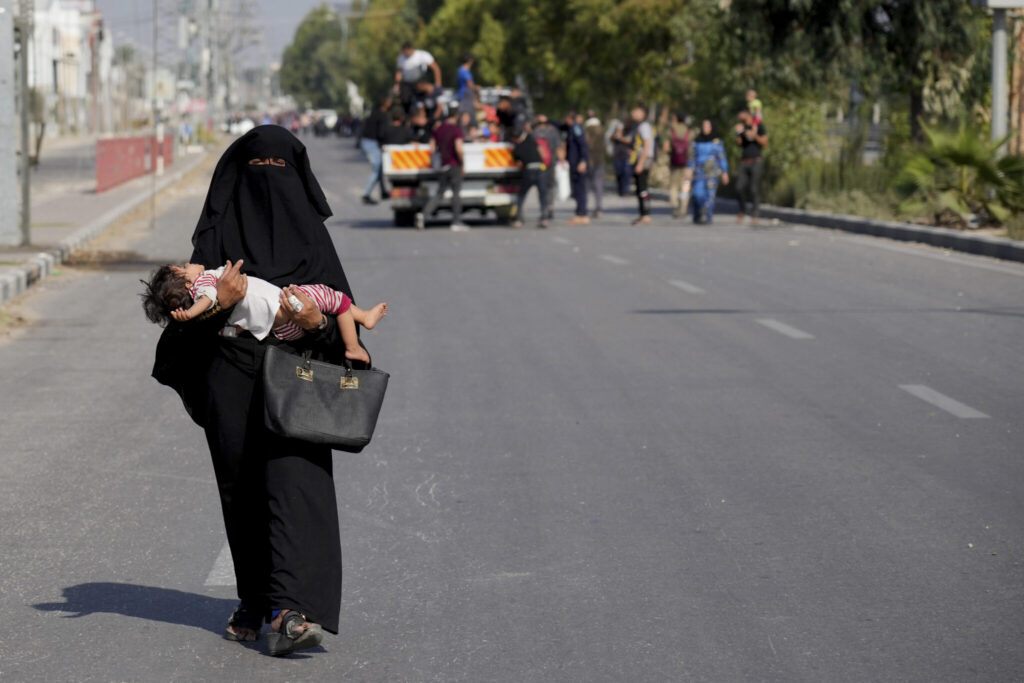
In the north of the Gaza Strip, Israeli ground forces backed by relentless airstrikes have encircled Gaza City, the base of Hamas ‘ power, since the weekend. They cut the strip in half and sought to drive Palestinians from northern Gaza as troops advanced.
From early on in the war, now in its second month, the army has urged civilians to move south, including by announcing brief windows for what it said would be safe passage through Salah al-Din, which runs through the center of the besieged enclave.
But tens of thousands of civilians have remained in the north, many sheltering in hospitals or United Nations facilities.
Those who have stayed put say they are deterred by overcrowding in the south, along with dwindling water and food supplies, and continued Israeli airstrikes in what are supposed to be safe areas. Some said fear of the treacherous journey, following reports from other travelers about coming under fire, initially made them hesitate.
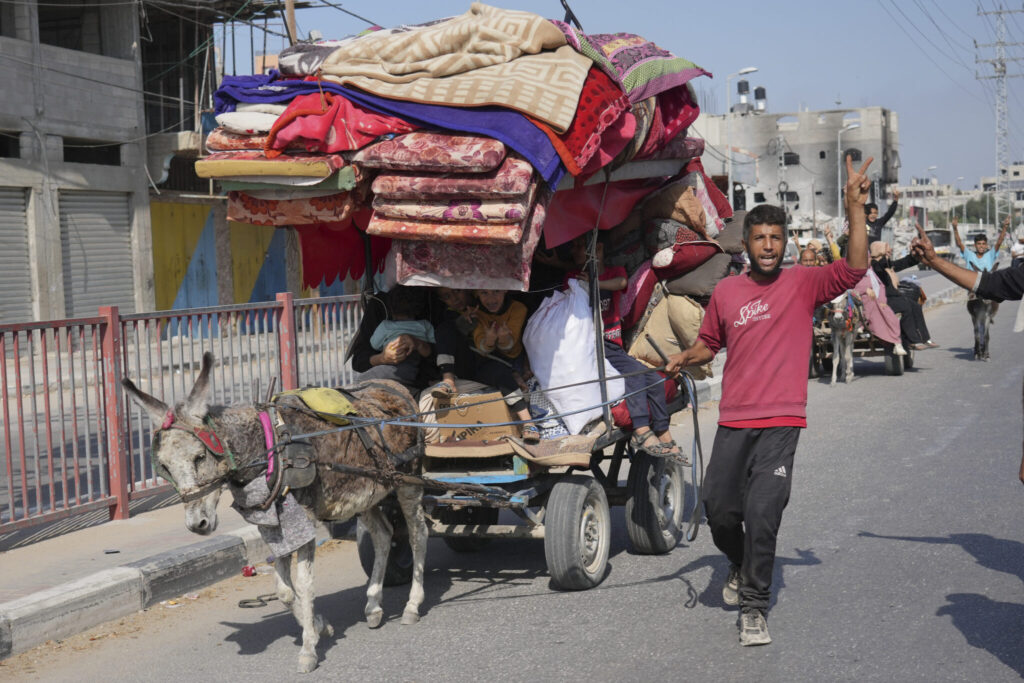
On Monday, Health Ministry in Gaza spokesperson Ashraf al-Qidra dismissed the Israeli offers of safe passage as “nothing but death corridors.” He said bodies have lined the road for days, and called for the International Committee of the Red Cross to accompany local ambulances to retrieve the dead.
Israel’s military said that, at one point, troops came under Hamas fire when trying to open the road temporarily for civilians. Israel’s Prime Minister Benjamin Netanyahu echoed the army’s claims in an interview with ABC News broadcast late Monday.
“We are fighting an enemy that is particularly brutal. They are using their civilians as human shields, and while we are asking the Palestinian civilian population to leave the war zone, they are preventing them at gunpoint,” Netanyahu said.
The claims could not be verified independently.
During a four-hour evacuation window Sunday, fewer than 2,000 made the move, followed by about 5,000 on Monday, according to U.N. monitors.
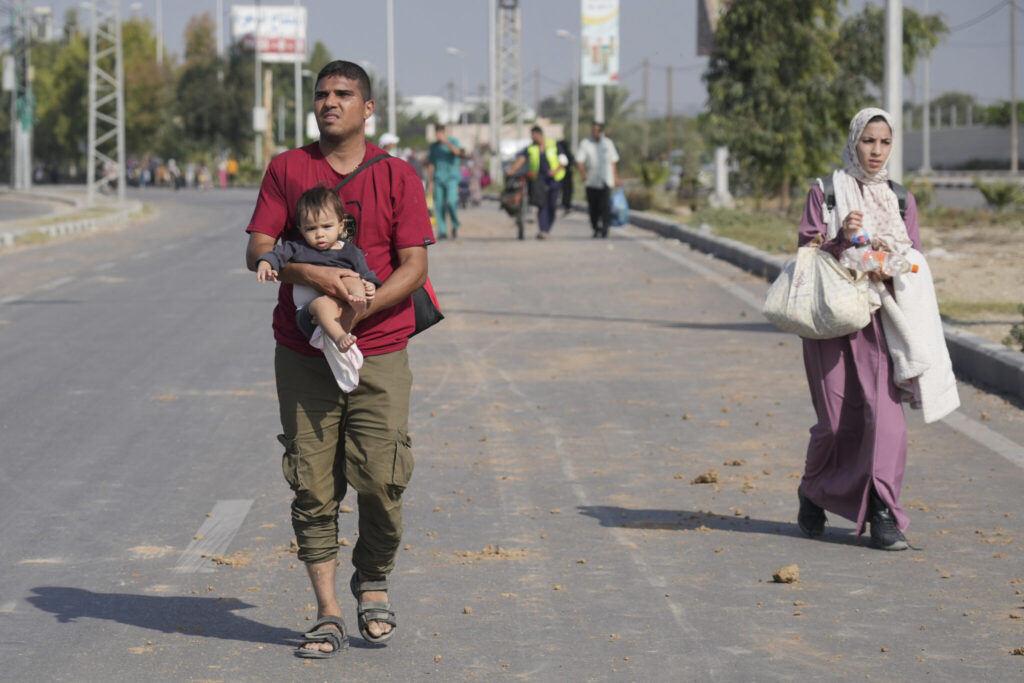
Some of those were from Gaza City and the adjacent Shati refugee camp, fleeing Monday after heavy Israeli bombardment there overnight.
“Last night was very difficult,” said Amal, a young woman who declined to give her family name due to safety concerns. She was part of a group of 17 people making the journey Monday. She said tanks fired near the group. Soldiers then ordered everyone to raise their hands and white flags before being allowed to pass.
Nour Naji Abu Nasser, 27, arrived Sunday in Khan Younis in southern Gaza. She described an hourslong frightening journey.
“They fired at the sand around us. They wanted to scare us,” she said, adding that she saw bodies lying along the road outside Gaza City.
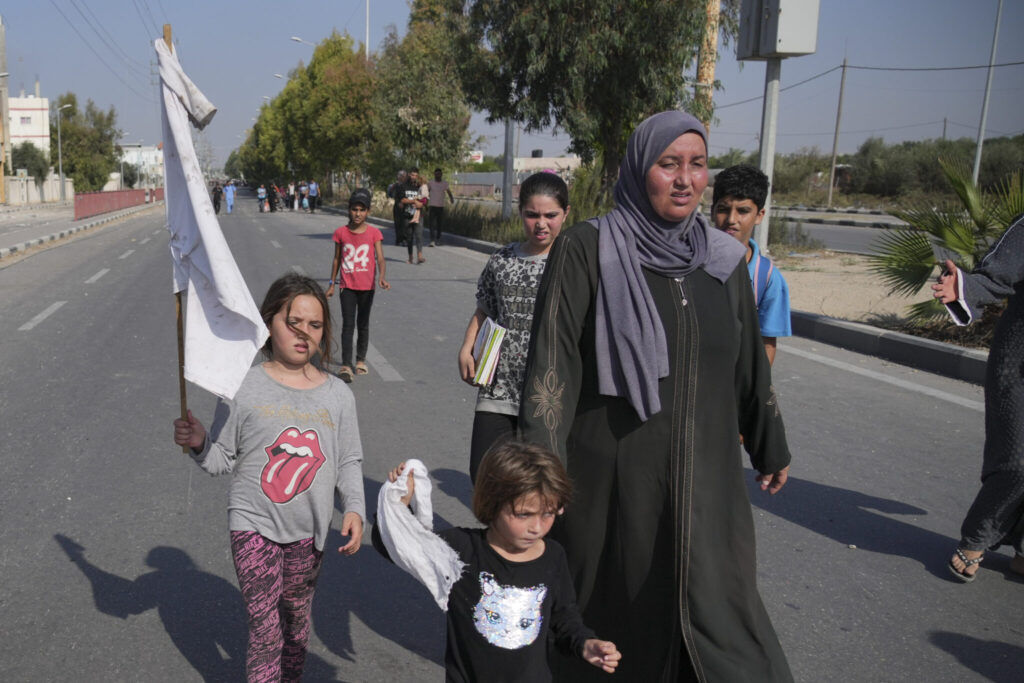
Once those fleeing the north had reached the evacuation zone, residents from the Bureij refugee camp along the highway offered water — a scarce resource in wartime Gaza — to the evacuees.
The four-week war has displaced more than 1.5 million people across Gaza, according to U.N. figures.
The Israeli military said thousands heeded its orders to move south.
The U.N. agency for Palestinian refugees says more than 530,000 people are sheltering in its facilities in southern Gaza, and it’s now unable to accommodate new arrivals. Many displaced people sought safety by sleeping in the streets near U.N. shelters, the agency said.

